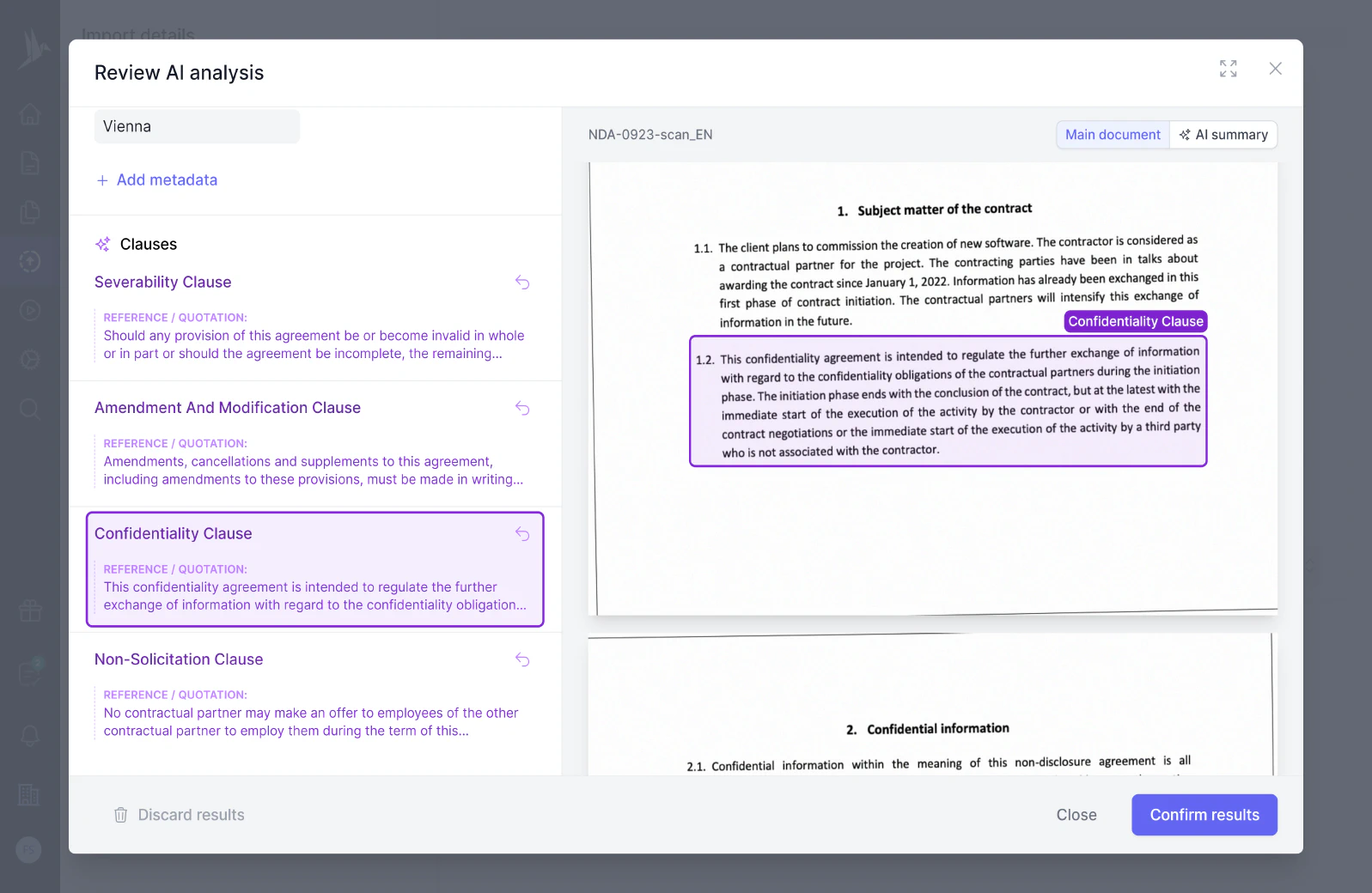
Equity-Based Joint Venture Agreement Template
A comprehensive and customizable joint venture agreement template designed to clearly define roles, contributions, management, and operational terms.
The "Language of Agreement" clause specifies the official language in which the contract is written and takes precedence in case of disputes regarding interpretation. Often included in international contracts, it helps ensure that all parties have a clear understanding of the terms, mitigating the risk of misunderstandings due to language differences.
Language of Agreement: Language of Notices 1. The language of this Agreement is English. If translated into another language, this English version of the Agreement shall be controlling. Except as may be agreed by LICENSOR and LICENSEE, all notices, reports, consents, and approvals required or permitted to be given hereunder shall be written in the English language representing the same intent as the original document.
LANGUAGE OF AGREEMENT. The parties hereto confirm that it is their express wish that this Agreement, as well as related documents and notices, be drawn up in English. Les parties a la presente convention conferment leur volonte expresse que cette convention, de meme que toute documentation ou avis afferent, soit redigee en anglais.
Language of Agreement. The parties acknowledge that it is their express wish that this Agreement and all notices and other documents to be given or executed pursuant hereto be in English.
If there is any translation of this Agreement to other languages, the Italian version shall govern.
Language of Agreement. This Agreement has been drafted in the English language at the express wish of the parties. Le present document a été rédigé dans la langue anglaise à la volonté expresse des parties.
Language of Agreement. The parties to this Agreement have expressly agreed that this Agreement be drawn in the English language. Les parties aux présentes ont expressément convenu que le présent contrat soit rédigé en anglais.
Language of Agreement. TeraGo and the Customer confirm that they wish to have this Agreement written in English only. Les parties aux présentes confirment leur volonté que cette convention soit rédigée en langue anglaise seulement.
Language of Agreement. The language of this Agreement shall be construed as a whole according to its fair meaning, and not strictly for or against any party.
Language of agreement refers to the specific wording and phrases used within a contract or legal document to formalize an understanding between parties. It provides clarity and minimizes misunderstandings by precisely outlining each party’s rights, responsibilities, and obligations. This language is essential in conveying the mutual assent of parties entering into an agreement.
You should use language of agreement when drafting any legal documents where parties are mutually consenting to terms. This includes but is not limited to:
In essence, whenever a formal, binding agreement is being established, the language of agreement should be used to ensure all parties understand and agree to the terms.
To effectively write the language of agreement:
Example: “The Parties hereby agree to the following terms and conditions…”
Language of agreement can be found in a wide range of contracts, such as:
Each of these documents will utilize language of agreement to bind the involved parties to their respective commitments in a clear, enforceable manner.
These templates contain the clause you just read about.

A comprehensive and customizable joint venture agreement template designed to clearly define roles, contributions, management, and operational terms.
Dive deeper into the world of clauses and learn more about these other clauses that are used in real contracts.
A Late Payment Penalty clause stipulates that if a payment is not made by its due date, the party responsible for the payment will incur an additional fee or penalty. This clause incentivizes timely payments and compensates the payee for any inconvenience or financial impact caused by the delay.
The "Launch Date" clause specifies the exact date on which a product, event, or service is officially introduced to the market or public. It outlines any associated obligations or expectations for the parties involved to ensure that all necessary preparations are completed by this stipulated date.
A Lead Warning Statement is a mandatory notice included in contracts, particularly in real estate and rental agreements, stipulating that properties built before 1978 may contain lead-based paint, which poses health risks. This clause usually alerts tenants or buyers about the potential for lead exposure and outlines their rights to information and necessary precautions.
Try our AI contract analysis and extract important clauses and information from existing contracts.
< <
Fill out the form and we will get in touch with you to give you a personal, customized demo of fynk.
Greetings!
I'm Markus, co-founder of fynk. After you've submitted the form, I'll swiftly get in touch with you.
Also, right after you submit your details, you can pick a time that works best for you for our meeting.

